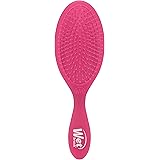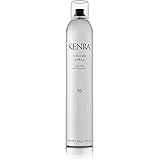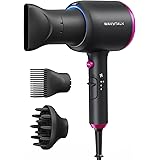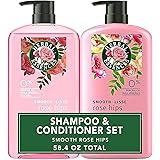Introduction to Hair Damage
Hair damage is a prevalent concern that affects individuals across various demographics. Understanding the concept of hair damage is crucial for anyone aiming to maintain healthy, vibrant hair. Damage can manifest in numerous ways, such as brittleness, split ends, and a dull appearance, which can significantly detract from one’s overall aesthetic. The common causes of hair damage are multifaceted and primarily include environmental factors, the excessive use of heat styling tools, chemical treatments, and insufficient hair care practices.
Environmental factors play a notable role in hair health. Elements such as sun exposure, wind, and pollution can strip the hair of its natural oils and moisture, leading to dry and lifeless strands. In many cases, even seasonal changes can exacerbate these issues, making hair more prone to damage. The significance of protecting hair from environmental stresses cannot be overstated, as they can lead to long-term consequences for hair integrity.
Another significant contributor to hair damage is the frequent use of heat styling tools, which include hair dryers, curling wands, and straighteners. While these devices can help achieve desired hairstyles, they often do so at the expense of hair health. The high temperatures associated with heat styling can alter the hair’s structural proteins, leading to weakened strands and increased breakage over time.
Chemical treatments, such as coloring, perming, or relaxing, further contribute to hair damage. These processes can compromise the hair’s natural structure and moisture balance, resulting in increased porosity and susceptibility to environmental factors. Additionally, neglecting basic hair care practices, such as adequate cleansing, conditioning, and moisturizing, can exacerbate existing damage or create new issues altogether.
Recognizing and addressing hair damage is essential for anyone who desires to improve their hair health. By understanding its causes and impacts, individuals can take informed steps towards fostering stronger, more resilient hair.
Understanding Your Hair Type
Hair care is not a one-size-fits-all endeavor; the key to effective treatment lies in understanding your specific hair type. Hair is typically classified into four main categories: straight, wavy, curly, and coily. Each type exhibits unique characteristics and responds differently to various products and environmental factors, which is crucial when considering damage prevention strategies.
Straight hair tends to lie flat, displaying natural shine due to its smooth surface. However, this type can be more prone to oiliness because the scalp’s natural oils can travel down the hair shaft more easily. It is essential for individuals with straight hair to use lightweight, hydrating products that can nourish the hair without weighing it down. Regular trimming can also help eliminate split ends, thus reducing the risk of damage.
Wavy hair, characterized by its loose curls that form an “S” shape, is often a bit more complex to manage. Wavy hair typically requires hydration and careful styling to avoid frizz. Products designed specifically for wavy hair textures often contain moisture-retaining ingredients, which help to maintain the natural wave pattern. Protecting this hair type from heat damage is crucial, as excessive styling can lead to brittleness.
Curly hair is defined by its tight curls or ringlets, which can often be dry due to the natural oils having a tougher time traveling through the twists. Therefore, curly hair often benefits from rich conditioners, leave-in treatments, and products that enhance curl definition while preventing frizz. It is advisable to adopt a regimen that emphasizes hydration to minimize damage from dryness.
Finally, coily hair features tightly packed curls or kinks, making it the driest of all hair types. The structure of coily hair can hinder oil distribution, leading to brittleness and breakage. Utilizing heavier oils and creams is beneficial in maintaining moisture. Protective styles that minimize manipulation can also help in reducing overall damage.
Understanding your hair type enables you to tailor your hair care routine effectively, allowing you to address specific needs that will help prevent damage and promote healthier hair.
Essential Hair Care Products
Choosing the right hair care products is vital to maintain the health and integrity of your hair, especially if it has been subjected to damage from various styling tools, chemical treatments, or environmental factors. The first step in any effective hair care regime starts with selecting a sulfate-free shampoo. Sulfates are harsh detergents that strip natural oils from the hair and scalp, potentially exacerbating dryness and damage. A sulfate-free shampoo gently cleanses without disrupting the natural moisture balance, making it an essential addition to your routine.
Following up with a quality moisturizing conditioner is fundamental for replenishing moisture and improving hair elasticity. Look for conditioners infused with natural oils and humectants that hydrate the hair shaft, smoothing frizz and enhancing shine. Ingredients such as argan oil, coconut oil, and shea butter are particularly beneficial, as they provide deep nourishment and help repair damage while preventing future breakage.
Incorporating a protein treatment into your hair care regimen is another effective way to support damaged hair. Protein treatments strengthen and fortify the hair cuticle, making it more resilient to daily wear and tear. Opt for treatments that contain hydrolyzed proteins, which can penetrate the hair shaft and repair from within. The frequency of these treatments should be based on your hair’s specific needs; typically, every 4-6 weeks is optimal for most hair types.
Lastly, utilizing a leave-in product can provide additional protection and hydration. Leave-in conditioners and serums create a barrier against environmental aggressors while providing ongoing moisture. They are particularly useful for maintaining hydration between washes and are great for combating the effects of humidity. Selecting the right essential hair care products will significantly contribute to healthier, more resilient hair, paving the way for lasting beauty and vitality.
Heat Protection Techniques
Heat styling is an integral part of many hair care routines, providing versatility in achieving desired looks. However, frequent exposure to high temperatures from tools such as blow dryers, flat irons, and curling wands can lead to significant hair damage. To mitigate these adverse effects, a systematic approach to heat protection is essential.
One effective method of safeguarding hair is the use of pre-styling products. Heat protectants are specifically formulated to create a barrier between the hair and the heat, reducing moisture loss and preventing structural damage. Look for products that contain ingredients such as dimethicone or cyclomethicone, which form a protective layer, as well as natural oils that can enhance shine and provide additional moisture. These products should be applied generously to damp hair before styling.
Furthermore, adopting safe styling practices is crucial in minimizing heat exposure. Start by allowing your hair to air dry partially before using a blow dryer. Opting for a lower heat setting can significantly reduce the risk of damage. Most modern tools feature various temperature settings, enabling users to tailor the heat level according to their hair type. For example, fine or damaged hair should be styled at lower temperatures, around 300°F, while thicker textures may tolerate higher settings of approximately 400°F.
In addition to leveraging the right products and techniques, it is advisable to limit the frequency of heat styling. Embrace styles that can be achieved without excessive heat, such as braids or updos, which allow for versatility while protecting hair from damage. By being mindful of both the tools you use and the methods employed, you can enjoy the benefits of stunning hairstyles while keeping your hair healthy and vibrant.
Nourishing Hair Masks and Treatments
Deep conditioning is an essential practice in hair care, especially for those struggling with damage due to factors such as heat styling, chemical treatments, or environmental stressors. Nourishing hair masks and treatments serve to replenish lost moisture, enhance hair strength, and improve shine. By integrating these solutions into your hair care routine, you can significantly revitalize your tresses.
DIY hair masks are a popular choice for individuals seeking natural remedies. One effective recipe combines mashed bananas, honey, and olive oil. Bananas are rich in natural oils and vitamins, while honey serves as a humectant, drawing moisture into the hair. Olive oil, packed with fatty acids, aids in strengthening hair strands. Simply blend these ingredients, apply to damp hair, and let sit for 30 minutes before rinsing thoroughly.
Another beneficial DIY mask involves a mixture of avocado and yogurt. Avocado is renowned for its nourishing properties and provides essential fatty acids and vitamins that enhance hair health. Yogurt contributes protein, which is vital for repairing damaged hair. Combine ripe avocado with yogurt, apply the blend to your hair, and leave it on for 20-30 minutes before rinsing.
If you prefer store-bought treatments, several options are available on the market. Look for masks containing ingredients like argan oil, keratin, or coconut oil, as they provide deep hydration and promote healthy hair growth. Brands that focus on natural ingredients often offer effective solutions for various hair types, helping you achieve the desired results and maintain overall hair integrity.
Incorporating nourishing hair masks and treatments into your regimen is pivotal for restoring life to damaged hair. Regular use of these restorative products, whether homemade or purchased, can lead to noticeable improvements in moisture retention, strength, and shine, ultimately enhancing your hair’s overall appearance.
The Role of Diet in Hair Health
Maintaining healthy hair often goes beyond the application of topical products; diet plays a pivotal role in the overall strength and vitality of hair. Nutritional intake can significantly influence hair growth and resilience, making a balanced diet crucial for those seeking to improve their hair’s condition. Essential nutrients such as proteins, vitamins, and minerals not only support the body’s overall health but directly contribute to the maintenance of strong and vibrant hair.
Proteins are particularly important as hair is primarily composed of a protein called keratin. Ensuring an adequate intake of high-quality proteins can enhance hair structure and prevent breakage. Foods rich in protein include lean meats, fish, eggs, and legumes. Incorporating these foods into one’s daily meals can lead to noticeable improvements in hair strength and texture.
Vitamins such as biotin, vitamins A, C, D, and E play critical roles in hair health. Biotin, also known as vitamin B7, has gained attention for its potential to promote hair growth. Foods like nuts, seeds, and sweet potatoes are excellent sources of biotin. Similarly, vitamin A is important for the production of sebum, which acts as a natural conditioner for the scalp. Leafy greens, carrots, and fish contain vital amounts of vitamin A. Omega-3 fatty acids, found in fish and flaxseeds, can also help nourish hair follicles, enhancing growth.
Minerals such as zinc and iron are equally important; they prevent hair loss and promote circulation to the scalp. Foods like spinach, quinoa, and pumpkin seeds are notable sources of these minerals. Additionally, if dietary adjustments are insufficient, considering supplements may be beneficial. Before making changes or introducing new supplements, consulting with a healthcare provider can help tailor an approach that is safe and effective for hair health.
Avoiding Common Hair Care Mistakes
Maintaining healthy hair is not just about using the right products; it also involves avoiding common mistakes that can lead to damage. One prevalent mistake is over-washing hair, which strips natural oils and leads to dryness. For many, the urge to wash hair daily can be tempting, especially for those with oily scalps. However, experts recommend tailoring your washing frequency according to your hair type. For instance, dry or curly hair may require only one or two washes per week, while oily hair might tolerate more frequent cleansing.
Another critical error is the use of harsh products that contain sulfates, alcohol, or artificial fragrances. These ingredients can aggravate the scalp and damage the hair shaft, resulting in breakage and a lackluster appearance. Instead, opting for gentle, sulfate-free shampoos and conditioners can help preserve moisture and promote overall hair health. Additionally, incorporating natural oils and treatments can nourish the hair, preventing further damage.
Many individuals also overlook the importance of regular trims in their hair care routine. Skipping trims can lead to split ends that travel further up the hair shaft, creating more damage over time. Scheduling a trim every six to eight weeks can effectively remove these split ends and support healthy hair growth. Furthermore, using heat protectants before styling with heat tools is vital to safeguard hair from the damaging effects of high temperatures.
Lastly, neglecting to protect hair from environmental factors, such as UV rays or chlorine, can contribute to damage as well. Wearing hats or using UV protection sprays can be beneficial, particularly during the summer months. Understanding and avoiding these common hair care mistakes will set the foundation for a healthier, more vibrant mane.
Protecting Hair from Environmental Damage
Environmental factors play a significant role in the health and appearance of our hair. UV rays from the sun can deplete moisture, leading to dryness and potential color fading, while pollution can accumulate on the scalp and strands, causing buildup that could weaken hair. Additionally, humidity can lead to frizz and a general lack of manageability, making it essential to adopt strategies for hair protection.
One effective way to mitigate the impact of UV rays is by wearing hats or scarves when outdoors. These accessories not only provide physical barriers but also add a stylish element to any outfit. For those who prefer to let their hair flow freely, utilizing UV protection sprays can be invaluable. These products are designed to shield hair from the harmful effects of sunlight, helping to maintain its vibrancy and moisture levels.
In urban settings where pollution is a constant threat, regular cleansing becomes paramount. Using clarifying shampoos can effectively remove toxins and buildup, keeping hair healthier and more resilient. It is advisable to follow up with a moisturizing conditioner to restore hydration immediately after cleansing. Incorporating products that contain antioxidants can also aid in replenishing nutrients that may have been lost due to environmental exposure.
Furthermore, locking in moisture is essential for maintaining optimal hair health. This can be achieved through the use of leave-in conditioners or natural oils, such as argan or coconut oil. These products not only nourish the hair but also provide a protective layer against environmental stressors. When styling, consider using heat protectants to minimize damage from styling tools, especially if environmental conditions force you to style more frequently.
By adopting these protective measures, individuals can effectively combat the adverse effects of environmental factors on hair, promoting overall health and resilience. Ensuring that hair remains shielded against UV rays, pollution, and humidity will ultimately contribute to its enduring beauty and vitality.
Establishing a Consistent Hair Care Routine
Implementing a consistent hair care routine is crucial for minimizing damage and promoting overall hair health. The following steps provide a structured approach to daily, weekly, and monthly practices that can yield positive results.
Begin with a daily hair care regimen designed to suit your hair type and needs. Start each day by gently detangling your hair with a wide-toothed comb or a soft brush, which minimizes breakage. If you regularly use heat styling tools, apply a heat protectant spray to shield your hair from potential damage. Keeping your hair clean is essential; choose a sulfate-free shampoo to cleanse your scalp, followed by a nourishing conditioner to maintain moisture.
Moving on to your weekly routine, consider incorporating deep conditioning treatments or masks. These products can be vital in restoring moisture and addressing any specific damage that may have occurred. Aim to perform this treatment at least once a week. Additionally, you can alternate between clarifying shampoos and regular shampoo to remove product buildup, taking care not to do this more than once every two weeks, as overuse can dry your hair out.
For a more extensive monthly routine, dedicate time to trim split ends that could lead to further damage. Regular trims, typically every six to eight weeks, will help maintain your hair’s overall health. You may also explore the benefits of natural oils, such as argan or coconut oil, applying them to your scalp to nourish and strengthen your hair. Lastly, evaluate any products you use monthly for effectiveness, ensuring they align with your hair’s evolving needs.
By establishing and following this comprehensive hair care routine, you can significantly improve your hair’s health while effectively reducing damage, enabling vibrant, beautiful hair over time.







http://Jeffreywhaps
Результатом работы полностью довольны, сопровождение ВЭД на высшем уровне: Сопровождение ВЭД